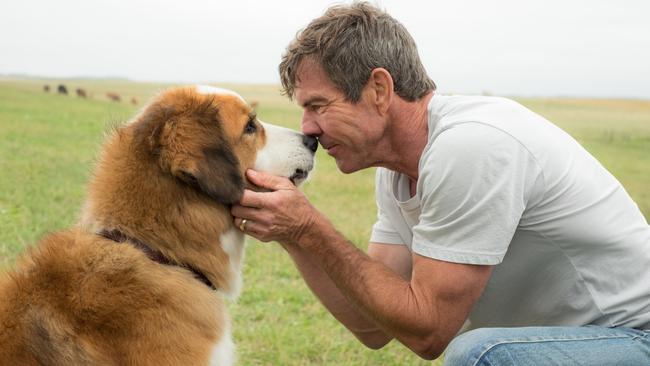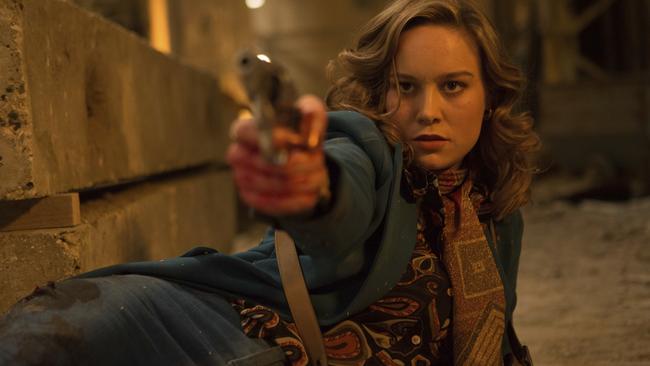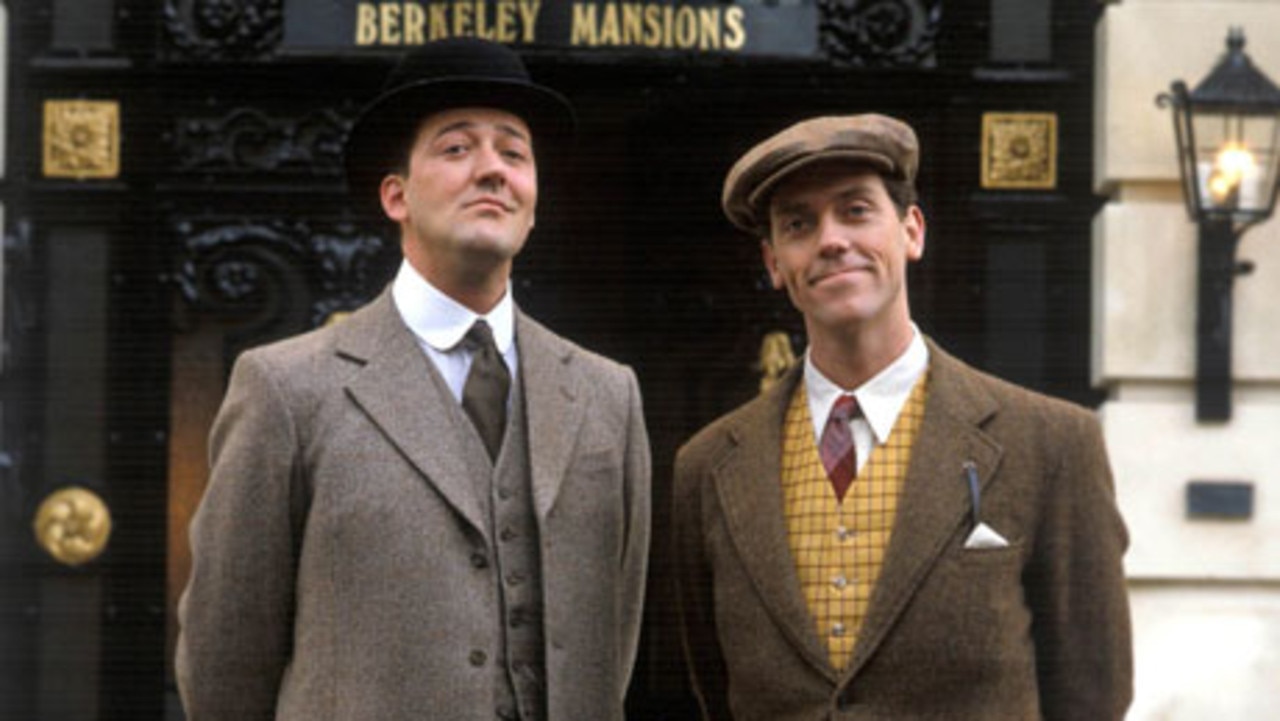Film reviews: A Dog’s Purpose with Dennis Quaid; Free Fire with Brie Larson
A Dog’s Purpose is a heartwarming tale that has drama, humour and pathos, plus some pretty cute pooches.

Two markedly different breeds of film this week, as their classifications suggest. Yet there’s a similarity, too: each starts out oddly, but the longer I watched the more I liked.
A Dog’s Purpose comes from Swedish director Lasse Hallstrom, who made the semi-masterpiece My Life as A Dog in 1985. That moving film is not about dogs. It’s about a grief-stricken boy who at times acts like a dog. He does have a dog, and his love for it leads to more sadness.
After Mitt Liv Som Hund Hallstrom went on to direct English-language films such as What’s Eating Gilbert Grape (1993), The Cider House Rules (1999) and the British-American version of Chocolat (2000).
His new movie is in English, too, even when it comes to the canine narrators. It’s based on the bestselling 2010 novel of the same name by W. Bruce Cameron, who is one of five credited scriptwriters, and has Steven Spielberg’s Amblin Entertainment on the production side.
And this time it’s all about dogs. It’s a fantasy-comedy-drama in which we follow the lives of five dogs. The fantasy element is that each of the dogs is the same one reincarnated, as a different breed, sometimes as the opposite sex. They are all voiced by American actor Josh Gad. WC Fields might have warned actors about working with animals, but he didn’t say anything about acting as animals, did he? Last year Gad was Chuck in The Angry Birds Movie.
“What’s the meaning of life? Are we here for a reason?’’ is the opening narration from the first dog, just a puppy. “Is there a point to any of this?” With lines such as that, his final question bounced in my head. This can be a problem when there are multiple scriptwriters, especially when one of them wrote the original book. But the script improves, helped by the solid work of actors such as John Ortiz and Dennis Quaid.
The second dog we meet — it’s the 1960s, the Bay of Pigs is in the news — is the central character (an odd description, I know, if all the dogs are reincarnated). He’s a golden retriever named Bailey. His eight-year-old owner is Ethan Montgomery (Bryce Gheisar). They have a happy life on the surface, but shadows loom. Ethan’s mum (Juliet Rylance) is loving and caring but his dad (Luke Kirby) is a dissatisfied travelling salesman who turns to the bottle.
When it comes to animals, we have come far since Rene Descartes’s view of them as unthinking, unfeeling automatons. Measuring animal intelligence is a legitimate field of scientific study, one that has contributed to some absorbing books in recent years, such as Frans De Waal’s Are We Smart Enough to Know How Smart Animals Are?
There’s a subtle point in such books: in an unscientific sense, we consider animals smart if they will do what we ask. Dogs fit this assumption well. A dog who sits when you tell it to is intelligent; a dog who ignores you is dumb. Maybe not. Hallstrom and his cast have fun with this in ways any dog owner will understand.
“I decided right there and then,” Bailey says on first meeting Ethan, “I am definitely keeping this boy.” Soon after, he tells us his name is “Bailey, Bailey, Bailey, Bailey, Bailey, Bailey”. When he sees the now-teenage Ethan (New Zealand actor KJ Apa) kissing a girl (Britt Robertson), he feels sorry for his master. “No matter how much he looked for food in there he never found any … and he looked a lot.”
The highlight, for me, due to similar experience, comes when Bailey eats a rare coin Ethan’s father wants to show off to impress his boss. A panicked Ethan urges Bailey to, well, relieve himself. “I really wish I knew what he was saying,” Bailey laments.
It’s a scene that recalled another terrific book, The Philosopher and the Wolf (2008), by Miami-based Welsh philosopher Mark Rowlands. Bailey’s coin consumption is small change compared with what Rowland’s wolf cub does when he’s left alone in the flat. A hint: what is the source of the leather on couches?
As time goes on, “Bailey” becomes Ellie, a female German shepherd police dog in violent 70s Chicago, with Ortiz as her handler; Tino, a Pembroke Welsh corgi in the 80s who helps a young woman (Kirby Howell-Baptiste) find love (her boyfriend is played, no kidding, by actor Pooch Hall); and finally as a Bernese mountain dog named Buddy. Quaid comes in at this point, as the adult Ethan.
There was some controversy over a scene in which Ellie does a river rescue. Animal welfare activists released a video suggesting the German shepherd was forced to do the stunt. Later there were claims the video had been doctored. Hallstrom said he would never hurt an animal.
This film has drama, humour and pathos. A dog’s life is short and while they don’t know that, we do. By the end, I found A Dog’s Purpose different in a good way, which is also how I think about the three dogs in my household.

OK, there is another similarity between A Dog’s Purpose and the unconventional British crime drama Free Fire. Dogs, reservoir ones specifically. Ben Wheatley, a talented and innovative director, nods to Quentin Tarantino’s 1992 classic, including by turning an abandoned warehouse into a very bad place to be.
The opening is slow and undramatic. A couple of Irish men are in a car, heading to a meeting of some sorts. Stevo (Sam Riley) tells Bernie (Enzo Cilenti) about an incident the night before, something that will become important.
They meet two other Irish men, Chris (Cillian Murphy of Peaky Blinders fame) and Frank (Michael Smiley). They gather in the dark outside a warehouse. It’s Boston, 1978. They are met by a woman, Justine (Oscar-winner Brie Larson), and taken inside.
There they meet a group of American men. Ord (Armie Hammer) is the handsome, sophisticated one. Noah Taylor is in their group, too, nationality uncertain. None of them are dapper, of course, as it’s wide-lapel late 70s.
Then a foreigner arrives and he takes over the meeting. His name is Vernon (South African actor Sharlto Copley). “What the f..k is that accent?’’ one of the Irish wonders. “Swiss or something?” And so the subplot is revealed. The Irish men are with the IRA and the have crossed the pond to buy guns from the Americans and the semi-mad Rhodesian. Vern, we hear, was “misdiagnosed as a child genius and never got over it’’.
I say subplot because what soon happens is the real point of the film: a gunbattle that goes for about 90 minutes. It starts because Stevo is recognised by one of the Americans, regarding that unpleasant incident the night before.
But this is not Reservoir Dogs. Nor is it Rambo or Die Hard. I doubt I’ve seen a film in which more shots were fired, but most of them miss. “I’ve clipped his wings!’’ Vern yells at one point, when the 100th bullet he’s shot grazes someone’s arm. This is one aspect of the film that grew on me. There are lots of bad guys (and one girl who may be bad), lots of guns, lots of bullets, but by and large the marksmanship is a lot closer to reality than it is when the firearm is held by Sly Stallone or Bruce Willis.
The dialogue is also dryly funny. The script is by Wheatley and his long-term writing partner (and wife) Amy Jump. The IRA soldiers and the American gangsters are not stereotypical. When one of the Yanks notices Frank’s dandruff, the result is subtle and humorous. So is the use of John Denver songs on the soundtrack, especially Annie’s Song towards the end.
It’s interesting to see Murphy away from Peaky Blinders, but this role doesn’t give him a lot of room to do something different. Ditto for Taylor, who is also so good in that TV series.
It’s a challenge to make a movie out of a long gunfight in a Boston warehouse but Wheatley more or less pulls it off. His previous film was also interested in a confined space, albeit a more luxurious one: High-Rise, based on the JG Ballard novel. That starred Tom Hiddleston and Jeremy Irons, and Wheatley does come across as filmmaker’s filmmaker. Free Fire offers up a lot to talk about in terms of filmmaking ideas and techniques, but whether it’s an enjoyable movie in its own right is open to debate.
A Dog’s Purpose (PG)
3.5 stars
National release
Free Fire (MA15+)
3 stars
Limited release




To join the conversation, please log in. Don't have an account? Register
Join the conversation, you are commenting as Logout